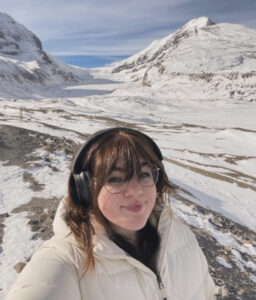SAEMC is an annual collaborative event that brings together both the exploration and mining industries in South Australia.
Posters
Posters 2024
Sponsored by: AusIMM
Prizes
1: Best Honours
2: Best PhD
3: Peoples Choice for Best Poster
Judging panel
Peter Hill
Peter is a South Australian geologist and the Chair of the South Australian Committee of the AIG. Peter contributes to the SA geology community by running the very successful monthly SA AIG Geopub events, engaging with industry, students and research.
Janine Herzig
Janine is the Convenor of the MetPlant Conference Series, former NED of Base Resources & former Director & Past President of the AusIMM. Janine is active in many industry voluntary roles including: Honorary Secretary of the SA & NT Divisions of ATSE – the Australian Academy of Technological Sciences & Engineering; Executive President & Non-Executive Director of CEEC International –Coalition for Minerals Efficiency – providing leadership for its Advanced Energy Curves & current flagship Global Water Initiative.
Andrew Proudman
Andrew Proudman is a Principal Consultant at AMC Consultants. Andrew has 35 years of accumulated mineral industry experience in geology, geotechnical engineering and mineral asset valuations in both operational and consulting roles.
SAEMC Poster Presentation
Poster 1
Adam Faisal & Kimberley Wyatt-Read
Title: Understanding Machine Learning and its Application to the Mining Industry within the Production and Development Spheres
Abstract: Our project applies machine learning techniques to identify and predict bottlenecks in the mining cycle at the Olympic Dam, one of Australia’s largest underground mines. By leveraging historical production drilling data, the model aims to reduce inefficiencies and enhance productivity through targeted insights. This innovative approach not only improves current mining operations but also sets the groundwork for future real-time monitoring systems, significantly benefiting the industry’s push towards operational efficiency.
Bio: Adam and Kim are final-year mining engineering students with a passion for machine learning applications in resource extraction. Through their honours project, they have explored ways to enhance the efficiency of mining operations by tackling production bottlenecks, contributing to the sustainability and productivity of the mining sector.
Poster 2
Britney Russell
Abstract: Within intensely weathered regions of arid or semi-arid Australia, such as the prospective Gawler Craton, fresh bedrock outcropping is scarce (González-Álvarez et al., 2016). With the exhaustion of major mineral deposits in the near surface over the last decade(González-Álvarez et al., 2016), expensive drill campaigns are becoming the go-to-approach in mineral exploration. A geochemical understanding of cover sequences and fluid flow, in regolith-dominated terrains is becoming increasingly important to pinpoint economic mineralisation and better define drill targets to prevent over-drill. The Hillside deposit, located on the eastern coast of the Yorke Peninsula is defined by a high tonnage, low grade (~0.6% Cu), Fe-Cu-(Au)-skarn deposit, with key features of an iron oxide-copper-gold (IOCG) system (Ismail, 2015). The Hillside deposit is part of the Olympic Cu-Au Province, more specifically part of the Moonta sub-domain, as defined by Skirrow et al (2002). This project investigates potential sources of, and the mobility of Cu through an approximate vertical profile in the Hillside deposit. Investigative techniques of this study include pXRF and ICP-MS analyses of soil, and µXRF, MLA SEM imaging and reflected-light microscopy for core samples. The comparison of portable XRF (X-ray Fluorescence) versus laboratory ICP-MS concentration data for Th, Y, P, S, Ti, Fe, Ni, Cu, Zn, Rb, Sr, Zr, Pb revealed some potential discrepancies. In general, base metals Cu, Zn, Fe, as well as Sr were measured accurately by the portable XRF. Evidence from soil ICP-MS indicates that remanent Cu is concentrated in Fe-rich clays above ore lenses and is more depleted in regions which do not overlie mineralisation. The elemental depletions and enrichments observed over the investigated soil transect typically depict a generic soil profile, ultimately suggesting that the best proxy for Cu mineralisation is in fact Cu. Furthermore, a study of the Hillside mineral paragenesis revealed Cu mineralisation as chalcopyrite replacing pyrite, followed by the supergene enrichment of Cu as chalcocite.
Bio: As a young geoscientist, Britney finds herself especially passionate about sustainable mineral exploration and effective mine rehabilitation. Her Honours project investigates the complex geochemical cycling of copper (Cu) in regolith developed on a mineralised IOCG site in the Gawler Craton of South Australia; knowledge which she aims to use in her future work in exploration and mine closure.
Poster 3
Title: The Benmara Story: Geochemistry, Geochronology and Sedimentology
Ruoheng Li1, Morgan Blades1, Darwinaji Subarkah1, Alan Collins1, Tony Hall1, Robert Klaebe1, Sarah Gilbert1, Paul Olin1
1University of Adelaide
Abstract: This study investigates the exploration potential of the northern South Nicholson Basin, focusing on a newly drilled ~1 km-deep core (23BNM003) from the Benmara region. Positioned within the Brunette Downs Rift Corridor, this area marks a critical boundary between the McArthur Basin and the Isa Superbasin. The core captures a range of Proterozoic sedimentary successions, offering valuable insights into depositional environments, stratigraphic correlations, and tectonic evolution. Through sedimentary logging, elemental chemistry, isotopic stratigraphy, and in-situ U–Pb and Rb–Sr dating, we identify stratigraphic links between the greater McArthur Basin and the Isa Superbasin. These findings not only enhance the geological understanding of the region but also provide critical data to support future resource exploration.
Bio: Li is an Honours student in Geology at the University of Adelaide. His project focuses on the chemostratigraphy, isotopic stratigraphy, and geochronology of the South Nicholson region.
Poster 4
Nicholas Wyndham
Bio: Nicholas Wyndham is an Honours student at University of Adelaide. In his thesis he looked at the glacial records of the ‘Snowball earth’ in the Cryogenian on Oman. In South Australia this event is well mapped and preriglacial features host copper mineralization at Mt Gunson.
Poster 5
Sultan Abulkhair
Title: Rapid and stochastic updating of geological domains in a resource model
Abstract: Resource modelling of mining deposits usually involves a comprehensive approach to modelling as many important variables as possible. This includes quantitative (e.g., grades) and qualitative (e.g., geological domains) variables that should be integrated into the block model together. For example, it is expected to divide the deposit into geological domains and estimate the grades within those domains. However, the major challenge in resource modelling is the uncertainty at locations with no conditional data available. Therefore, it is important to consider integrating massive streams of sensor measurements into the resource models. This work demonstrates a near real-time stochastic updating approach capable of integrating observations with qualitative information into the block model. The proposed methodology uses an ensemble Kalman filter with multiple data assimilations for rapid updating and Gibbs sampling for transforming geological domains into Gaussian random fields. Updating geological domains ensures that uncertainty around the domain boundaries is reduced to the minimum, which helps to get better grade prediction within each domain.
Bio: Sultan is originally from Kazakhstan and is currently a PhD candidate at the ARC Training Centre for Integrated Operations for Complex Resources, University of Adelaide. His research focuses on next-generation resource modelling, particularly techniques for rapid resource model updating using sensor observations accounting for the different types of data and levels of uncertainty. Before coming to Australia, Sultan studied Geology and Mining Engineering at Kazakh-British Technical University (B.Eng.) and Nazarbayev University (M.Sc.) in Kazakhstan.
Poster 6
Ahmadreza Khodayari
Title: Prediction of Blast-Induced Fragment Sizes at the Drawpoint of Sublevel Caving
Abstract: Sub-Level Caving (SLC) is a widely used mass mining method for large, steep ore bodies, relying on gravity to move fragmented material through the stope. Optimizing blast-induced fragmentation is critical for improving ore recovery, reducing dilution, enhancing Load-Haul-Dump (LHD) efficiency, and minimizing the need for ground support remediation. Fragment size distribution directly influences material flow through drawpoints, affecting productivity and the efficiency of downstream processes such as hauling and crushing.
To examine blast-induced fragment sizes, it is first necessary to understand the effects of rock properties, blast design, and operational parameters on the size distribution of blasted material, followed by an evaluation of how these variables interact. A series of simulations, validated using real data from Ernest Henry Mine (EHM), were conducted using a hybrid finite/discrete element method coupled with a non-ideal detonation model. These simulations assessed the effects of blast design, rock mass properties, in-situ stresses, and explosive energy on fragment sizes. They accounted for uneven explosive distribution caused by fan-shaped blast holes and the complex broken ground environment typical of SLC operations.
To verify prediction accuracy, both multivariate linear regression analysis and AI techniques including Random Forest, Gradient Boosting, Decision Trees, K-Nearest Neighbours (KNN), and Support Vector Regression (SVR) were applied. The input variables were categorized into four groups: Blast Design Factors (parameters controlled by operators), Rock Properties Factors (related to rock quality), In-Situ Stress (related to stresses in the rock mass caused by excavation), and Non-Ideal Detonation Factors (related to explosive energy and type).
This comprehensive approach, combining numerical simulation, empirical modelling, and AI techniques, provides a robust framework for predicting blast-induced fragmentation in SLC, offering valuable insights for optimizing mine operations and enhancing resource recovery.
Bio: Reza is a mining engineer passionate about exploring new materials and optimizing mine design. During his bachelor’s degree, he developed skills in Rock Mechanics laboratory tests, leading to papers on fracture toughness. He enhanced his numerical simulation abilities using Flac3D, Rhino, and Plaxis for his master’s project. While interning at Kavoshgaran Mining Consultant, he used Datamine software for mine planning. Currently, he works on blast design using the Mechanistic Blast Model with the Elfen engine and flow models using Discrete Element models to optimize mining costs by determining the optimal blast-induced fragment sizes in underground mining.
LinkedIn: https://www.linkedin.com/in/ahmadreza-khodayari-67a0ab179/
Google Scholar: https://scholar.google.com.au/citations?user=71duyj4AAAAJ&hl=en
Poster 7
Pouya Nobahar
Title: Linking the Resource to Downstream Mining Operations Through Integrated Process Modelling and Simulation
Abstract 1: This research project focuses on developing an integrated system that connects mining resources to downstream products through dynamic modelling and simulation. The goal is to optimize the entire mining value chain by linking various processes such as resource extraction, crushing, milling, and more. Each stage of the operation is simulated to understand its behaviour and impact on the overall process. By integrating data from multiple stages, including block models acquired from resources, the project aims to create a connected system that allows for more effective planning and decision-making in mining operations. In this project, data acquired from resources will be used in different operational situations and settings, enabling the identification of the best operational configurations and block values to enhance the proficiency of mining processes. A central component of the project is the development of meta models that represent each stage of the mining process. These models are created using extensive simulations and capture key variables such as throughput, recovery, and energy consumption. By simulating different operational scenarios, the project explores how various parameters impact the overall performance of the mining operation. The meta models enable rapid testing of numerous scenarios, allowing for the optimization of key factors that influence efficiency and productivity. Machine learning plays a significant role in this research by enhancing predictive capabilities. By integrating machine learning into the simulation framework, the project aims to improve decision-making in mining operations, ensuring more accurate and efficient resource management. The methodology of the project emphasizes real data acquisition and sensitivity analysis, ensuring that simulations are grounded in practical, real-world conditions. This approach allows for targeted optimization of mining processes, identifying key parameters that have the most significant impact on performance. Ultimately, the project contributes to more sustainable mining practices by optimizing resource extraction, reducing energy consumption, and improving overall operational efficiency.
Bio: Pouya Nobahar is a PhD student at the ARC Training Centre for Integrated Operations for Complex Resources at the University of Adelaide, with over 7 years of experience in the mining sector and holding A.Sc., B.Sc., and M.Sc. degrees in mining engineering. His research focuses on developing an integrated system to optimize the mining value chain by linking resources to downstream products through dynamic modelling, simulation, and machine learning. Pouya’s work involves large-scale simulations to optimize pit and operational settings, and he is actively exploring machine learning techniques to predict ore processing outcomes and improve throughput. He is committed to advancing sustainability practices within the mining industry and aims to address the challenges of resource management through innovative solutions. In addition, Pouya is passionate about collaboration and knowledge sharing, often engaging with industry experts to enhance the impact of his research.
Poster 8
Milena Nasretdinova
Title: Integrating X-ray Computed Tomography and X-ray Fluorescence sensed core data for Lithological Classification
Abstract: Identifying lithological domains is a fundamental aspect of the mining process, playing a crucial role in determining the composition and distribution of rocks, minerals, and ores. Accurate lithological classification enhances decision-making in exploration, resource assessment, extraction, processing, and environmental management. Traditionally, geologists rely on direct visual inspections to describe cores, but this approach is time-consuming and prone to subjective interpretations in mineral classification. The need for rapid, automated core classification has become paramount to improving accuracy and efficiency in lithological analysis.
X-ray Computed Tomography (XCT) is a powerful non-destructive technique for detailed inspection of core samples, offering valuable insights into core structure, while X-ray Fluorescence (XRF) provides precise elemental composition data. This research focuses on developing an algorithm that integrates both XCT scan images and XRF data for lithological classification. XCT data captures the internal structure of the core at a sub-millimetre scale, while XRF data supplies detailed geochemical information.
The proposed methodology involves pre-processing XCT images to enhance structural features and aligning them with corresponding XRF data signals and lithological labels, ensuring accurate integration across depths. Following this, the combined dataset undergoes feature extraction to capture key percentile-based characteristics from XCT, compositional markers from XRF, and lithological labels as reference points for supervised learning. These integrated features are then used to train and evaluate both Random Forest and XGBoost classifiers, leveraging structural, elemental, and lithological characteristics for lithological prediction. A comparative analysis of these two approaches is conducted to assess their respective strengths, with a focus on model robustness, interpretability, and classification accuracy. This comparison highlights the most effective model for accurate, automated lithological classification, offering insights for refining core analysis in mining exploration and other geological applications.
Bio: Milena Nasretdinova is a mining engineer with a passion for geometallurgical modelling and process optimization. As a PhD researcher at the University of Adelaide, she focuses on integrating X-ray Computed Tomography (XCT), X-ray Fluorescence (XRF) data, and geometallurgical test results to improve orebody characterization. This work aims to leverage these datasets to develop predictive geometallurgical models that minimise the need for extensive sample testing while improving process predictions, ultimately contributing to more efficient and cost-effective mining operations.
LinkedIn: https://www.linkedin.com/in/milena-nasretdinova-276b81206
Poster 9
Amirreza Shakib
Title: Conditioning cross-borehole seismic interferometry to interpolate rock mass strength and integrity
Amirreza Shakib1, Mark Bunch2, Nigel Cook3, Anton Kepic4
- ARC Training Centre for Integrated Operations for Complex Resources, The University of Adelaide, Adelaide, Australia
- School of Physics, Chemistry and Earth Sciences, The University of Adelaide, Adelaide, Australia
- School of Chemical Engineering, The University of Adelaide, Adelaide, Australia
- RoqSense
Abstract: There is a need to reliably predict the intactness of rock masses to improve their risk classification for development purposes. Until now, geotechnical engineers have relied on drilling boreholes and making assumptions for rock away from these holes or classifying the sub-surface rock mass based on properties of surface exposures. Current estimations of discontinuities are biased, leading to inaccurate rock classifications. RQD is widely utilized in rock classification systems but does not adequately represent the level of intactness and internal strength of the rock mass. Micro-fractures, which significantly weaken rock, do not necessarily result in a lower RQD. On the other hand, predicting the rock mass strength parameters using in-situ testing is time consuming and money dependent, which makes it hard to run the in-situ testing continuously and exhaustively. Moreover, Laboratory rock mechanics tests of cores can measure the strength parameters of intact rock, but not rock mass.
This study is focused on using a cross-borehole seismic technique calibrated by borehole logging data and modelled using data analytics methods to detect and predict geomechanical discontinuities within mine-site rock masses as well as rock mass strength parameters. Identifying these discontinuities is crucial for rock mass classification and rock mechanics modelling, both being critical factors for resource development planning. Seismic methods have shown major strengths in detecting geological features within rock mass non-destructively and affordably. However, previous studies have struggled to detect these features at a small-scale and with acceptable reliability. The significance of the present work is that it deals with using multiple datasets to reliably detect rock mass discontinuities even at a small scale. The outcome of the study will empower rock mechanics engineers to better classify a rock mass and understand its propensity to fracture, with implications for crushing/grinding behaviour in mineral processing operations.
Bio: Amir is a PhD student at the University of Adelaide, having started in February 2024. He holds a Bachelor’s degree in Mining Engineering, completed in 2019, and a Master’s degree in Mining Engineering (specializing in Rock Mechanics), completed in 2022. With over 4 years of professional experience in mining engineering and R&D, Amir has contributed to projects related to mining operations, geotechnical analysis, and research-driven innovations in related fields. His PhD research focuses on using cross-borehole seismic interferometry, along with other data sources, to detect fractures and predict rock mass parameters. Amir’s goal is to innovate, develop commercially viable ideas, and make contributions to the mining industry
LinkedIn: https://www.linkedin.com/in/amirreza-shakib/
Website: https://iocr.com.au/portfolio/project-hdr1-phd/
Poster 10
Junlin Qu
Abstract: Ore flow refers to the systematic movement of extracted ore from the resource through various stages, including transportation, storage, and processing. Effective management of ore flow is critical for optimising resource utilisation, minimising operational costs, and enhancing the economic viability of mining operations. However, achieving optimal production scheduling is complicated by the dynamic and uncertain nature of the mining environment. The lack of mature ore-tracking technology and real-time ore flow optimisation models further hinders dynamic ore flow management. This highlights the need for advanced models to address such variability while improving decision-making in ore flow management. The project aims to develop an inventive ore flow optimisation model that integrates Radio Frequency Identification (RFID) technology with linear programming (LP) to ensure the production schedule is constantly updated and dynamically optimal. By tracking ore flow from uncertain resources to the run-of-mine (ROM) stockpiles and processing plant, the RFID tags will provide real-time data on actual ore flow, enabling continuous updates to the production schedule. This dynamic approach allows the mathematical model to adapt to real-time conditions, offering a significant advantage over traditional static scheduling methods, which are limited in their capacity to respond to changing mining environments. Carrapateena will serve as a case study to validate the applicability and effectiveness of the proposed model. The research aims to provide novel solutions that can improve ore recovery, reduce dilutions, and enhance resource utilisation efficiency. By integrating RFID technology with the proposed mathematical model, this study will introduce an innovative framework for real-time ore flow optimisation that is relevant across different mining contexts.
Bio: Junlin is a PhD candidate in Mining Engineering at the University of Adelaide. His research focuses on integrating real-time ore tracking with dynamic production scheduling optimisation in mining operations, with a strong emphasis on optimising the entire mining value chain. This innovative research is part of the ARC Training Centre for Integrated Operations for Complex Resources.
Junlin has two years of practical experience as a mining engineer at a dolomite open-pit mine, where he worked on optimising mining operations and production parameter design. This hands-on experience deepened his understanding of mine planning and operational efficiency. During his Master’s studies, Junlin specialised in mine planning and parameter optimisation, further honing his expertise in production strategies and technological solutions for mining challenges. Outside of research, Junlin enjoys basketball, fitness, swimming, and music.
Poster 11
Richel Annan Dadzie
Title: Characterization of Flotation Tailings for Copper Recovery
Abstract: Over the years, the depletion of high grade resources coupled with the increased demand for metals and minerals for the advancement in technology have resulted in the exploitation of unconventional resources such as mining tailings to augment current low grade ores. Such tailings consist of unrecovered valuable minerals and gangue minerals. Reprocessing mining tailings could unlock residual copper and other valuable minerals, improving resource efficiency and contributing to sustainable mining practices. Additionally, reducing the volume of tailings could mitigate environmental risks associated with tailings storage facilities. This study characterizes low-grade copper tailings from conventional flotation circuits to evaluate their feasibility for further processing. Advanced analytical techniques such as X-ray Fluorescence (XRF), Inductively Coupled Plasma (ICP), X-ray Diffraction (XRD), and Quantitative Evaluation of Minerals by Scanning Electron Microscopy (QEMSCAN) were used to analyze the tailings’ elemental and mineralogical composition. The elemental analysis revealed key elements such as copper, iron, silica and sulphur. Chalcopyrite was identified as the primary copper mineral, while iron oxides and silicate gangue minerals dominated the bulk of the material. QEMSCAN analysis showed that chalcopyrite was only partially liberated, with a significant portion remaining locked within iron oxides and silicates. Given the mineralogical complexity, particularly the intergrowth nature of chalcopyrite with gangue minerals, several potential reprocessing strategies were proposed. Magnetic separation offers a potential in removing bulk liberated iron content from the ore. Enhanced froth flotation may improve copper recovery if preceded by finer grinding to increase mineral liberation. Fine particle handling, increased energy costs, and water management could present challenges that must be addressed in any reprocessing efforts. This paper contributes to sustainable mining practices and resource optimization by enhancing the recovery of valuable minerals from tailings.
Keywords: Copper, QEMSCAN, Mineral liberation, Sustainable mining
Bio: Richel Annan Dadzie is PhD Student in Mineral Resources and Engineering at the University of South Australia, Future Industries Institute. Her research specializes in advanced flotation techniques and fluidised bed flotation of copper ore at fine particle sizes. With two years of hands-on experience as a metallurgist in a gold processing plant, Richel brings practical industry knowledge to her research. Collaborating closely with industry leaders, Richel’s work focuses on optimizing mineral processing through innovative methodologies.
Poster 12
Title: Apatite chemistry and geochronology as an indicator of orogenic gold mineralisation in the eastern Bendigo Zone, Victoria, Australia
Luke Tylkowski1,2, Caroline Tiddy1,2, Adrienne Brotodewo1,2, David Giles1,2, Ross Cayley3, Robert Thorne4
1Future Industries Institute, University of South Australia, SA 5095, Australia
2Mineral Exploration Cooperative Research Centre (MinEx CRC), SA 5095, Australia
3Geological Survey of Victoria, Department of Energy, Environment and Climate Action, VIC 3000, Australia
4Commonwealth Scientific and Industrial Research Organisation, WA 6151, Australia
E-mail address: luke.tylkowski@mymail.unisa.edu.au
Abstract: Alteration zones surrounding orogenic gold systems are commonly small and complex (Goldfarb & Pitcairn 2023; Li et al. 2022) making mineral exploration difficult. However, explorers can use the chemistry of stable mineral phases to indicate proximity to mineralisation, provided the mineral chemistry can be linked to alteration or mineralisation and is distinct from the surrounding bedrock. Apatite is an ideal mineral phase to serve this purpose, as it can retain rare earth element (REE) profiles that reflect the source rock type (O’Sullivan et al. 2020) or can be associated with apatite precipitation during orogenic gold mineralising events (e.g. Zheng, Shen & Feng 2022). Additionally, apatite can be dated using the U-Pb decay system.
This presentation illustrates how apatite chemistry and geochronology can be used to identify and date orogenic Au mineralisation in the Bendigo Zone, southeastern Australia. Individual apatite grains from Au-mineralised samples were analysed for mineral chemistry and U-Pb geochronology using LA-ICP-MS. Combined REE, Sr and Y geochemistry was used to classify grains as detrital (igneous, metamorphic, mixed origin) or associated with mineralisation. The mineralisation related apatite was further categorised into three subgroups based on distinct REE patterns, which exhibited neutral to positive Eu anomalies, LREE and HREE depletion and high Sr. The three subgroups may suggest multiple phases of apatite precipitation from different mineralising fluids, a finding that may have implications for the understanding of gold mineralisation at the Fosterville deposit. The apatite interpreted to be associated with mineralisation yielded ages between 390-330 Ma, inclusive of the interpreted age of 384 ± 6 Ma for mineralisation at Fosterville (Bierlein et al. 2001).
Bio: Luke is a PhD Student studying at University of South Australia researching resistive minerals as an indicator for orogenic gold mineralisation in southeastern Australia. The project is part of the MinEx CRC, under Project 7, Finding Mineral Systems Under Cover and is in association with the Geological Survey of Victoria.















